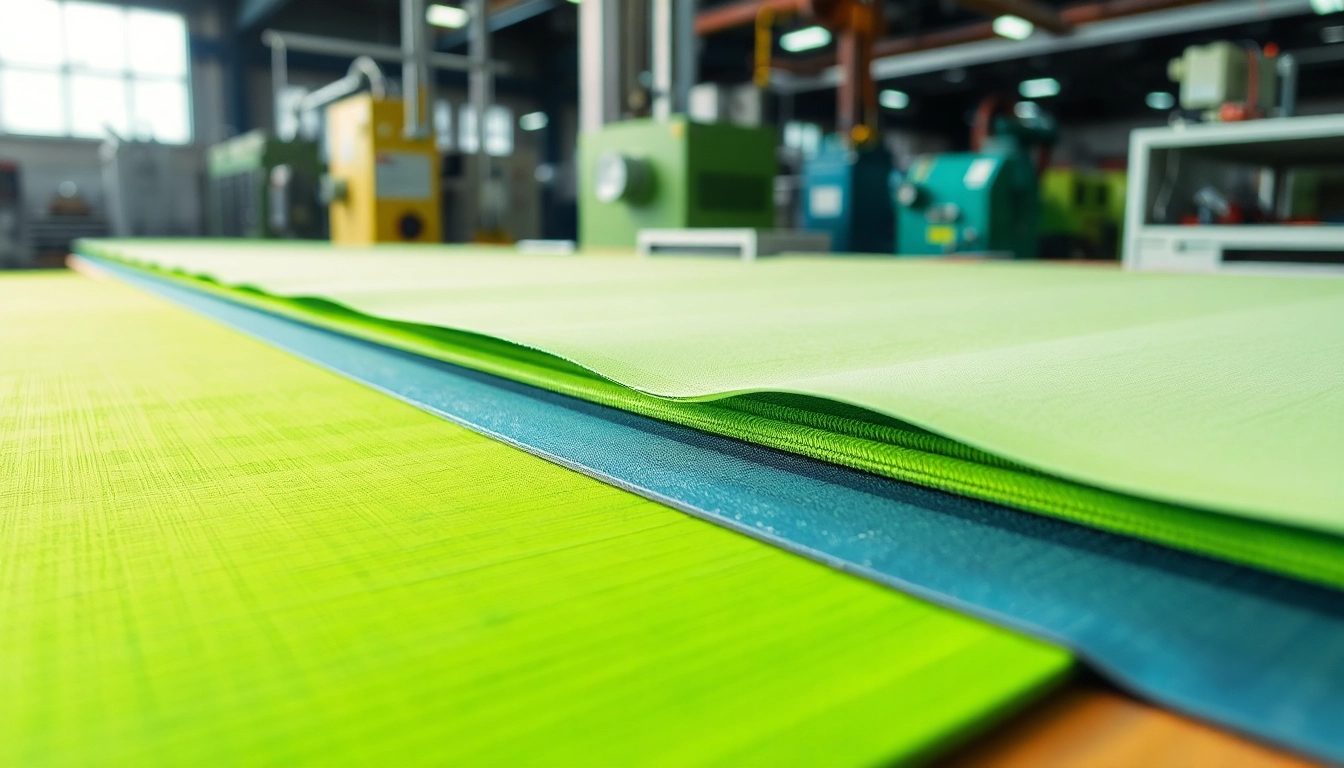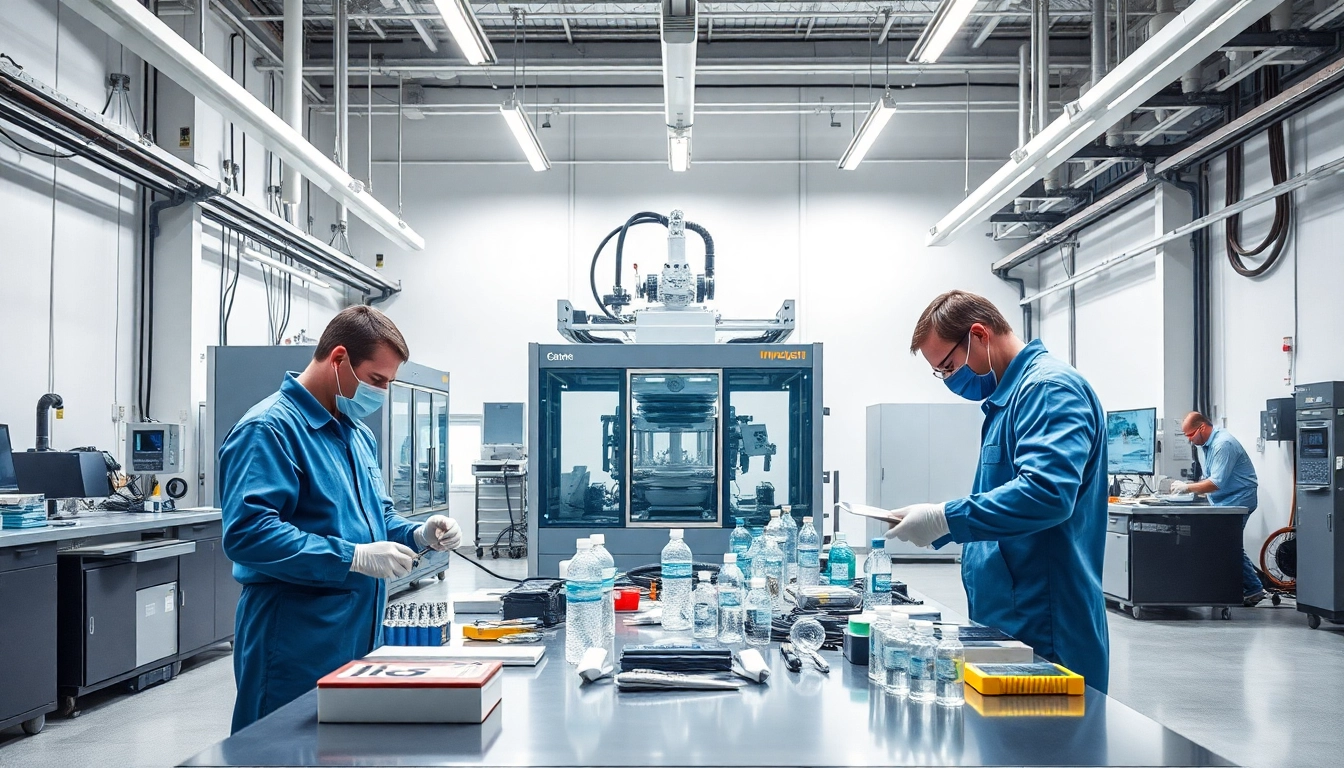Understanding Epoxy Prepregs
In the modern landscape of advanced manufacturing, materials play a crucial role in determining the performance and longevity of various products. Epoxy prepregs are one such material that has gained prominence due to their exceptional properties and versatility across different industries. This article delves into what epoxy prepregs are, their key characteristics, applications, and the myriad benefits they offer to manufacturers.
What Are Epoxy Prepregs?
Epoxy prepregs are composite materials consisting of reinforcing fibers, such as carbon or glass, that have been pre-impregnated with a thermosetting resin matrix—specifically epoxy. This pre-impregnation process involves saturating the reinforcement fibers with the liquid epoxy resin before the material is cured, allowing for improved consistency and performance in the final composite structure. Once properly cured, epoxy prepregs exhibit superior mechanical properties, making them ideal for a wide range of applications.
Key Characteristics of Epoxy Prepregs
The effectiveness of epoxy prepregs stems from their unique characteristics, which include:
- High Strength-to-Weight Ratio: The combination of lightweight fibers and powerful epoxy resin produces materials that boast remarkable strength without adding significant weight.
- Excellent Durability: Epoxy prepregs offer exceptional resistance to chemicals, moisture, and environmental factors, which contribute to the long-lasting performance of the end products.
- Thermal Stability: They maintain structural integrity under varying temperature conditions, an essential feature for applications in aerospace and automotive sectors.
- Low Shrinkage: The controlled curing process minimizes dimensional changes during and after solidification, leading to precise and reliable components.
Common Applications Across Industries
Due to their unique properties, epoxy prepregs are utilized across a variety of industries, including:
- Aerospace: Used in the construction of aircraft components, these materials provide lightweight structural elements essential for fuel efficiency and performance.
- Automotive: Epoxy prepregs are employed in producing high-performance parts, such as body panels and chassis components, contributing to lighter vehicles and improved performance.
- Sports Equipment: From bicycles to fishing rods, the strength and flexibility of epoxy prepregs allow for the manufacturing of sports equipment that can withstand harsh conditions while being lightweight.
- Marine Applications: The marine industry leverages these materials for building hulls and other components that require high durability and resistance to corrosion.
The Benefits of Using Epoxy Prepregs
Incorporating epoxy prepregs into manufacturing processes yields numerous advantages that enhance overall efficiency and product quality.
Cost Efficiency in Production
One of the most significant benefits of epoxy prepregs is their cost efficiency during production. The automation of handling prepregs reduces labor costs and minimizes waste. Additionally, the ability to manufacture complex shapes and geometries leads to fewer secondary processing steps, thereby streamlining production and reducing time-to-market.
Improved Strength and Durability
Components made from epoxy prepregs contribute to enhanced performance due to their high tensile strength and resistance to wear. This resilience extends the lifespan of products, translating into lower maintenance costs and increased customer satisfaction.
Enhanced Processing Features
Epoxy prepregs are known for their user-friendly processing capabilities. They allow for precise layering and the creation of intricate designs without compromising the integrity of the material. The inherent tack of the pre-impregnated fibers keeps them in place during assembly, ensuring a smooth manufacturing process.
Manufacturing Techniques for Epoxy Prepregs
Understanding the various manufacturing techniques employed for epoxy prepregs is essential for producing high-quality composite materials. This section explores the main techniques that come into play.
Overview of Compounding Methods
Compounding is the initial phase in the prepreg process where resin formulation and fiber selection are essential factors. Various methods, such as hot-melt and solvent-based processes, are employed depending on the final desired properties of the prepreg. Typically, the hot-melt method is preferred due to its efficiency and ability to produce high-quality prepregs, characterized by a uniform resin distribution.
Curing Processes Explained
Curing is a critical step in the production of epoxy prepregs. The curing process can vary based on the required mechanical properties and application environment. Generally, the prepreg is subjected to heat and pressure in an autoclave, allowing the resin to undergo a chemical reaction that triggers hardening. The choice of curing temperature and time can significantly impact the final properties of the composite material.
Quality Control Measures
Implementing stringent quality control measures is vital in the production of epoxy prepregs. This can include testing for fiber volume fractions, resin content, and curing uniformity. Advanced techniques such as X-ray and ultrasonic testing help identify defects within the prepreg, ensuring reliability and performance consistency in the final products.
Challenges in Working with Epoxy Prepregs
Despite their advantages, manufacturers may encounter challenges when working with epoxy prepregs. Understanding these challenges allows for the implementation of effective solutions.
Handling and Storage Best Practices
Epoxy prepregs require specific handling and storage conditions to maintain their effectiveness. It is crucial to keep prepregs refrigerated or frozen to prevent premature curing. Additionally, thorough training for personnel on proper handling techniques helps avoid damage or contamination of the material.
Tack Issues During Application
One of the challenges faced with epoxy prepregs is maintaining adequate tack during the application process. Inadequate tack can lead to difficulties in lamination and inconsistent bonding. Employing optimized resin formulations and ensuring correct temperature conditions can mitigate these issues.
Environmental Considerations
Concerns about the environmental impact of epoxy prepregs, particularly regarding the disposal of composite materials, are relevant in today’s market. Manufacturers are increasingly focused on developing eco-friendly epoxy formulations and recycling processes that reduce waste and environmental footprint.
Future Trends in Epoxy Prepreg Technology
The field of epoxy prepregs is constantly evolving, with new trends emerging to meet the demands of various industries. This section highlights some of these significant trends.
Innovations in Resin Formulations
Research and development efforts are focused on creating innovative resin formulations that improve the performance characteristics of epoxy prepregs. These developments may include bio-based or modified epoxies that enhance performance while minimizing environmental impact.
Advancements in Manufacturing Equipment
The evolution of manufacturing equipment continues to enhance the efficiency and capability of producing epoxy prepregs. Advances in automation and robotics are streamlining processes, leading to higher production rates and reduced labor costs.
Eco-Friendly Alternatives in Prepregs
As sustainability becomes a priority, the demand for eco-friendly alternatives in epoxy prepregs is on the rise. This includes the introduction of recyclable fibers and bio-based resins, paving the way for developments that align with environmental goals while maintaining performance standards.
Conclusion
As manufacturers navigate the complexities of modern production demands, epoxy prepregs emerge as a robust solution offering unparalleled strength, durability, and versatility. Their application spans numerous industries, driving innovations in product design and performance. By adhering to high-quality manufacturing practices and staying abreast of industry trends, companies can leverage the benefits of epoxy prepregs to enhance their competitive edge.



